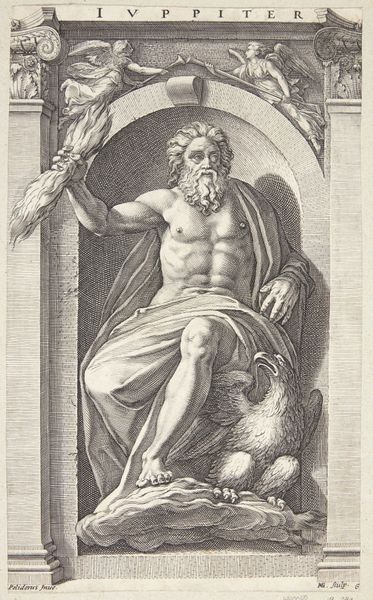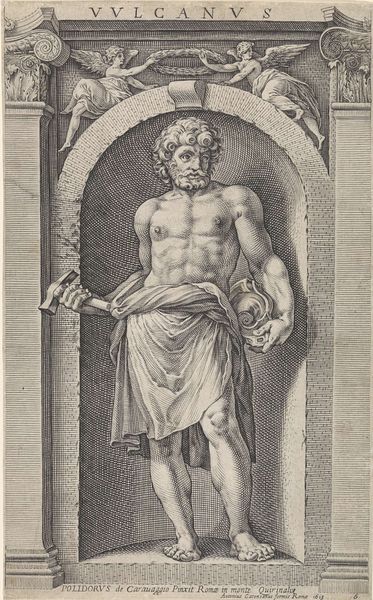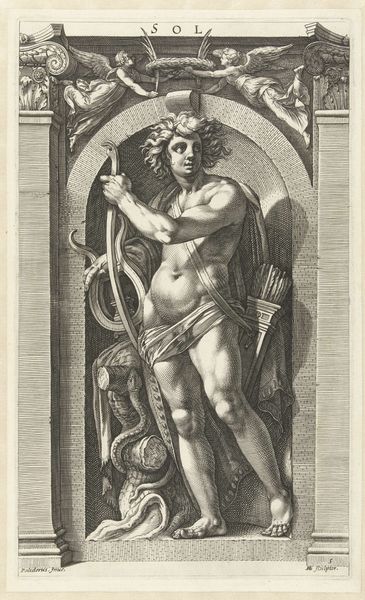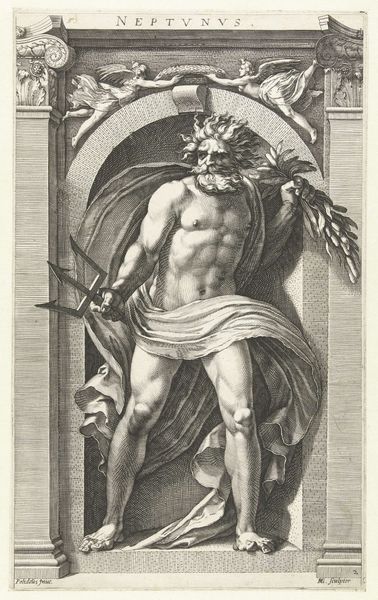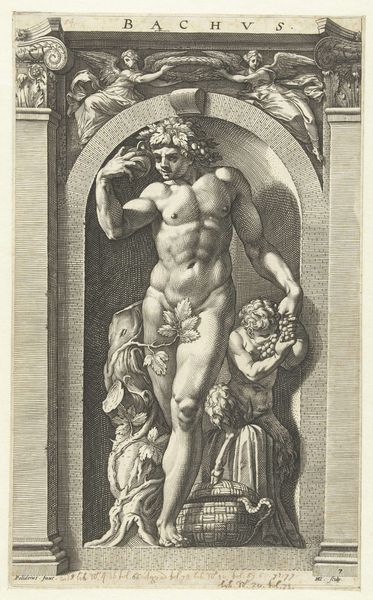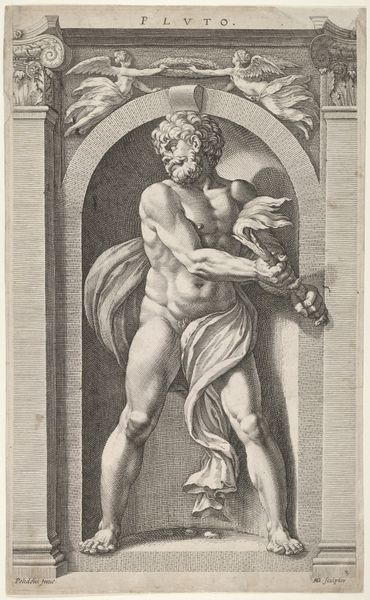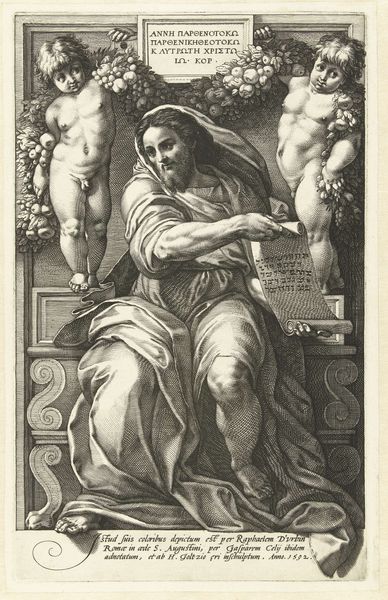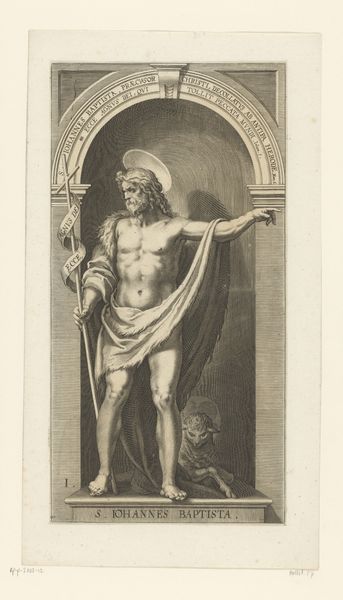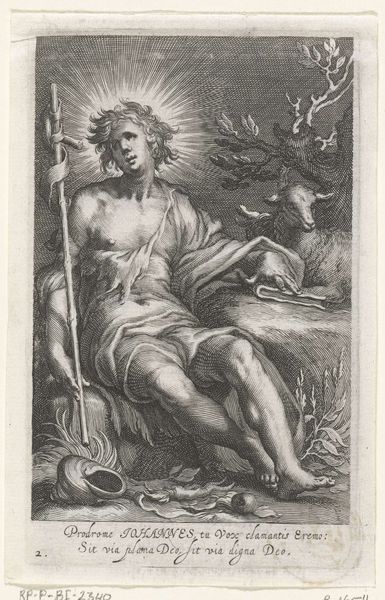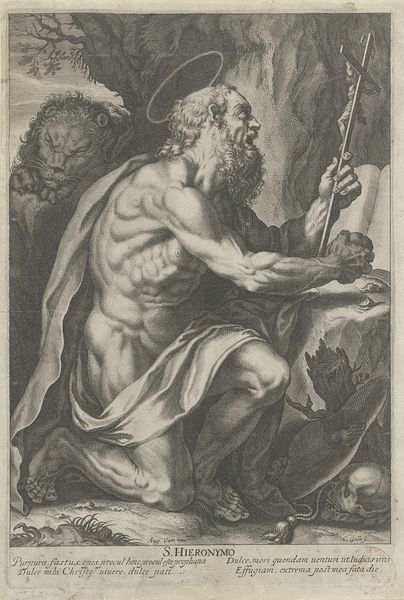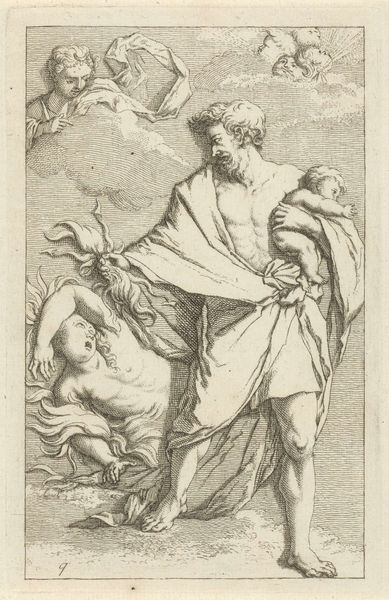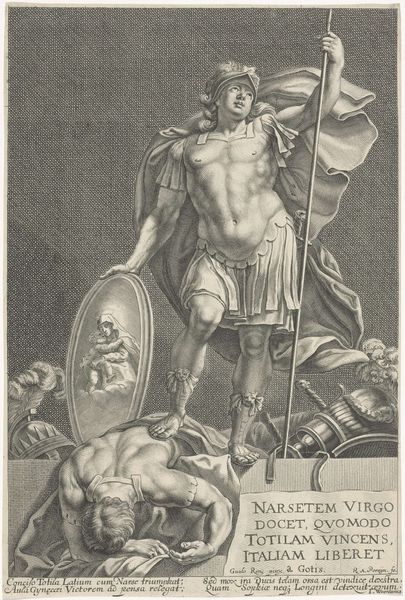
print, engraving
#
portrait
#
baroque
# print
#
old engraving style
#
caricature
#
figuration
#
history-painting
#
engraving
Dimensions: height 355 mm, width 212 mm
Copyright: Rijks Museum: Open Domain
Editor: This is Hendrick Goltzius's "Jupiter," an engraving from 1592, currently residing at the Rijksmuseum. The level of detail in this print is remarkable, especially given its age. How should we approach understanding this piece? Curator: I think we should consider this engraving as an object produced through very specific material conditions. The labour involved in creating the copperplate, the tools used, and the printing process itself all shape the final image we see. Editor: So, it’s less about Jupiter the mythological figure and more about the 'making' of Jupiter as a tangible thing? Curator: Precisely! Look at the use of line. The varying thicknesses and densities aren't just aesthetic choices; they reflect the engraver’s skill and the pressure applied to the burin. Each mark is a record of physical labour. Editor: That makes me consider the social context. Was there a big market for prints like this back then? Were they luxury goods, or more widely accessible? Curator: Good question! Prints like this helped circulate imagery beyond the elite. While not cheap, they were often more affordable than paintings, making mythology accessible to a broader, emerging middle class. The consumption of images was expanding alongside expanding mercantile networks. Editor: I hadn't thought about it that way. So, by analyzing the material and production, we get a clearer understanding of who this artwork was for and the societal forces that influenced its creation. Curator: Exactly. We shift the focus from solely artistic intention to the broader economic and social systems that gave rise to "Jupiter" as a physical object and cultural artifact. Editor: I see what you mean. I never considered the economic forces that influence it so much. Thanks for broadening my perspective!
Comments
No comments
Be the first to comment and join the conversation on the ultimate creative platform.
